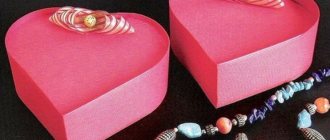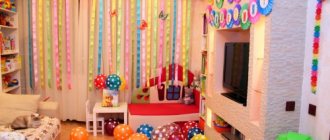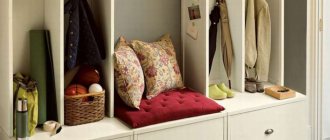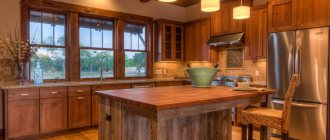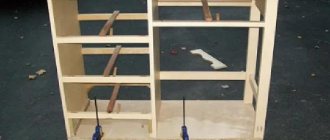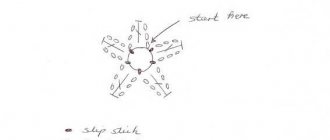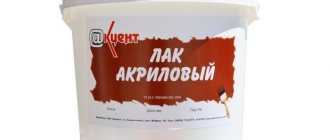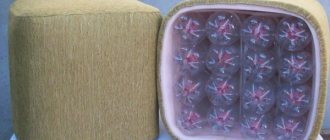Photography itself has ceased to be something valuable in the modern world. Everyone has mobile phones with powerful cameras and huge amounts of memory where they can store thousands of different photos. But it is important to remember that the value of a photo increases in proportion to the complexity of its creation. Stylistic photos are extremely valuable, in which a special setting is selected - background, accessories, clothing. Thematic photo zones help a lot with this; a suitable location is chosen for the equipment. Properly selected components of a photo shoot are the key to beautiful and unforgettable shots.
Types of photo zones
The design and appearance of the photo zone largely depend on your imagination and planned budget. If you can afford to use expensive items, then it will not only be beautiful, but also luxurious. But often, photo zones can be made independently from available materials or by purchasing materials as needed. However, they look no less luxurious and attractive.
It is necessary to prepare the design long before the planned event in order to take into account all the nuances.
Construction stages
Any gazebo for a summer residence, regardless of the chosen building material, is built in five easy-to-follow stages:
- Laying the foundation for the gazebo;
- Construction of load-bearing frame posts;
- Construction of the roof frame;
- Laying the subfloor frame;
- Finishing of “wall” objects (cladding).
The only difference will be in the different methods of joining materials (mechanical connection, welding or through additional connecting elements).
Also read: Gazebo with stove for any time of year
Laying a columnar foundation for a gazebo made of wood or metal.
Since the frame of the gazebo, made of wood or metal, does not bear a large load (essentially only its own weight and the weight of the roof), an economical and simple columnar foundation is quite suitable for its construction. To ensure a reliable foundation, work should be carried out in the following sequence:
- We decide on the location;
- We mark the perimeter of the site for the future gazebo. To do this, drive pegs in the corners, between
we stretch the string with them, check the correctness of the markings by measuring the diagonals; - We determine the locations of future supports. These will definitely be the corners of the perimeter, plus additional spaces, taking into account that the distance between the bases should not exceed 2000 mm;
- We dig holes in places designated for supports. The depth is based on soil freezing indicators. This is done to prevent distortions of the structure during operation;
- We pour sand into the drilled holes to a height of 150-200 mm, fill it with water for shrinkage, then tamp it;
- Place on the resulting sand cushion
reinforcing mesh and placing solid cinder blocks or ready-mixed concrete blocks on top of the cement mixture. Don't forget to check the level of the masonry. Instead of blocks, you can use old tires. They are also laid on a sand cushion, inside which crushed stone or gravel is poured and filled with liquid concrete; - We also fill the space between the edges of the pit and the blocks with sand to allow rainwater to freely seep into the ground;
- We lay roofing felt on the finished posts, then
we install a frame made of square (100×100 mm) wooden beams (grillage). At the ends of the timber we make half-wood cuts to a length of 80-100 mm. We impregnate the timber with special protective antibacterial and anti-flammable compounds. We pay special attention to impregnation in areas of future joints. Then we connect the timber “overlapping” using self-tapping screws.
For greater reliability of the connection of the grillage beam (bottom frame), you can additionally use metal corners. This will serve as a good safety margin if in the future there is a desire to make the gazebo closed or glaze it.
Also read: From a light gazebo to a solid pavilion
Construction of load-bearing racks
It is advisable to build a wooden gazebo frame using 100×100 mm wooden beams. All wooden components must undergo fire-bioprotective treatment (impregnation).
The number of racks is calculated by the number of bases around the perimeter, plus two racks at the future entrance to the gazebo. Their length will correspond to the expected height of the gazebo.
We install the racks strictly vertically using a plumb line or building level. To attach the stands to the base, we use reliable metal corners and wood screws.
You can strengthen the structure with additional bevels (short-length beams with ends cut at 45°), one end of which is nailed to the grillage, and the other to the post, forming, as it were, the hypotenuse of a triangle between the post and the lower ligament.
Next, you need to make the top trim similar to the bottom. Thus, the main frame for the gazebo is ready.
Construction of a roof frame for a wooden gazebo.
The roof can be of a wide variety of designs, but the easiest to install option for a square or rectangular gazebo on a summer cottage is a gable roof with overhangs that will protect the gazebo from flooding during rain.
The material most often chosen for the roof frame is a 50×100 mm board. The rafter system consists of triangles fastened from boards, folded at a certain angle depending on the desired slope of the roof, where two sides make up the rafters, and the third side serves as a screed (stiffening rib).
The length of the rafters is calculated in accordance with the dimensions of the gazebo and the required length of the overhang. The rafters, previously cut into half a tree, are connected to each other using self-tapping screws and metal triangular plates.
When installing triangles from rafters, you will need cuts in the timber of the top trim to the thickness of the board (50 mm) so that the rafters can be firmly strengthened. They are also fastened using wood screws and metal corners.
Also read: Chinese style gazebos
After securing the rafters, transverse battens are placed on both sides of the slope, the pitch of which depends on the roofing material used (tiles, moisture-resistant plywood, etc.).
Laying the subfloor frame.
To lay the subfloor frame we use a 50×100 mm board. We measure the internal distance between the parallel sides of the bottom trim and cut the required number of boards to this length.
We lay the boards on free foundations inside the perimeter of the grillage and secure them with metal corners. We do the same thing in cross section, again using half-tree cuts to fasten perpendicular boards to each other.
Inside the perimeter of the lower ligament, a frame of the floor base is formed onto which floorboards can be laid. It is even better to use a decking board made of pressed sawdust and polycarbonate; such material does not wear off, does not fade, and is not afraid of moisture.
There are different types of photo zones:
- The easiest option to make a high-quality design is a press wall. Basically, curtains, tulle and other fabrics are used to create such a screen. But there are press walls made of paper or decorated with it. In any case, guests get great pleasure from taking photos in such an area.
- Photo zone with windows from which you can look out. Taking photographs will bring a lot of laughter and fun. As a result, the owners win – a large number of funny photos and satisfied guests.
- Relaxation corner. Such an area is decorated with armchairs or a bench, around which a romantic atmosphere is created. Here you can relax and take photos as a souvenir.
- Blackboard with chalk. The highlight of this design is that guests will be able to leave their wishes on the board and immediately take pictures.
Using wire
The most common material for making a frame is wire. The lampshade frame can be made using spot welding. However, here you need to have the appropriate skills and equipment, which not everyone has.
Therefore, it remains to fasten the elements by twisting. And since a rather thick material is generally used (due to its considerable rigidity and elasticity), they are fastened together with thin wire. Another option is aluminum, but it is too plastic and easily deformed.
In addition to the material itself, you need to prepare a number of tools:
- Pliers - they will be used to bend and straighten the wire.
- Tongs with round jaws - convenient for twisting.
- Wire cutters - useful for cutting material.
- Hammer – you can also use it to straighten individual sections.
- Sandpaper - for cleaning frame elements before painting them.
- Thin wire - for twisting lampshade elements (connecting wire, 1 mm in diameter will be enough).
- Glue "Moment" - for a more reliable connection of elements.
Sometimes, in solving the problem of how to make a frame for a lampshade, you may need electrical tape for additional fixation of the elements, or a hacksaw for metal. Now the actual process of creating a wire frame, which can be represented in the form of several functional steps.
Materials for the photo zone
The most economical and winning idea is to decorate the holiday yourself. There can be many solutions and it all depends on desire and imagination. Possible options:
- Wall decoration using paper pompoms. As a result, you get bright and colorful photos.
- Paper flowers that are made very simply and quite quickly. Perhaps there will be difficulties with the first flower, but then things will go faster.
- DIY garlands made from paper will become a real decoration for a photo shoot.
- Decorating the wall with various attributes, for example, frames, collages, clocks, pictures, etc.
- Balloons will make a photo shoot not only more interesting, but also brighter, and the photos will turn out juicy and fun.
- Ribbons and bows. It is necessary to make a frame or at least install a crossbar on which to attach many ribbons of the same or different shades. It is best to make such walls not at home, but in nature, where a light breeze will develop the ribbons.
This is not the entire list of options that can be brought to life.
A number of advantages of independent work
When you make any crafts with your own hands, this implies the presence of certain advantages over finished products. Moreover, you can make any lampshade for a specific lamp with your own hands.
So, these advantages should be taken into account if there is a need to choose between purchasing a ready-made solution or making a hanging frame for a lampshade with your own hands. And there are many of them:
- First of all, this is an opportunity to end up with an exclusive lampshade.
- The master has at his disposal a much wider range of decorative designs than store-bought products can offer.
- In some cases, cost savings cannot be ruled out, and significant ones at that.
- Involving children in the process will develop their skills and creativity, which will benefit everyone.
- By putting a piece of your soul into your work, you can make an original gift to your loved ones. Elderly relatives will especially appreciate this - it will be a pleasant reminder of their grandchildren and children.
- You shouldn’t discount the psychological aspect either – after all, this is an opportunity to put your plans into practice, and then be proud of the result.
- Suitable for work are things that have been accumulated over the years, but have never found further use.
The listed arguments are quite convincing, and therefore you can now move on to analyzing the theoretical part, how you can make the frame of a table lampshade with your own hands.
Location
At home you will equip a photo zone with your own hands, in a rented room or on the street it’s up to you. But when choosing, you should definitely take into account various nuances. For example, large objects will look beautiful outdoors; when shooting, sunny or, conversely, cloudy weather can work to your advantage. A light breeze, blowing ribbons, fabrics and dresses, will also help to enliven the frames.
Decorating a photo zone with your own hands in the house will require minimal costs, because you can even use curtains as a background, having previously decorated them with various accessories. You can conduct paid photo sessions in a rented room, inviting a large number of people.
A separate option is to shoot using chromakey. Chroma key is a bright green background from which the subject is then cut out in Photoshop and inserted into another background. The procedure itself requires additional knowledge of Photoshop, but it cannot be called difficult, because the unnatural green color is easily removed.
Home holidays will become more fun if you install a small, beautifully decorated screen in your apartment. Taking photographs of guests can be turned into real fun, so the limited space in a small apartment will not be so noticeable.
Why are farms needed?
As for the types of metal structures for which the “truss” is used, the following areas are distinguished:
- Carport, gazebo, canopy.
- Covered parking, shelter for a well, summer veranda.
- Summer construction site and other places.
Thus, trusses made from profile pipes for canopies are used wherever there is a lightweight structure with the ability to withstand heavy loads. The production of a truss is almost always individual, except that this does not apply to standard projects. When you make it yourself, you first make one template, fit the parts to it, weld them, and then make all the other similar elements according to the template.
As for the number of trusses per span, this is calculated based on the planned load on the roof. Basically, a truss is placed on each intermediate post. Sometimes it is adjusted to the type of roofing material used.
Moreover, if for metal tiles and corrugated sheets this actually does not matter, then for polycarbonate the trusses should be placed so that the joint of the sheet is on the metal. Otherwise, the roof surface may become deformed.
The need to use trusses tends towards their cheapness, since among analogues, such a structure is the cheapest, most durable and reliable. The shape of the structure is such that the load is placed as evenly as possible, which even with a large amount of snow on the roof will not affect the duration of operation.
DIY photo zone
Let's look at some examples of how to make a photo zone with your own hands.
Frame materials:
- Using pipes or metal structures. The use of this option is very popular among decorators and photographers, because it is quickly assembled and disassembled, and also, in case of breakage of any connecting element, it is easy to repair. The main advantage is that the decoration can be made of any size and shape. There are also disadvantages: it is difficult for a girl to cope with fastening the structure. For decoration you need to use only fabrics.
- A wooden structure is somewhat more difficult to assemble, but it has a huge advantage - it will withstand any form of attaching decorations to it, be it nails, glue, paper clips, tape, etc. The undoubted advantage is the low cost of this design. In order to stretch the canvas over it, you can use a construction stapler.
- A frame made from plywood is considered an affordable option that is durable and reusable. An advantage can be considered the fact that it is easy to cut various shapes from plywood. The popular sizes are 1.5*1.5 m and 2.4*1.2 m. If you need to make the structure even larger, the sheets are fastened together. To install such a shield, it is necessary to additionally attach supports made of wooden beams or metal pipes on the reverse side. However, there is also a drawback - it is not convenient to transport such a structure.
As an alternative, you can take not plywood, but polystyrene foam or foam cardboard. The disadvantage of this material is its fragility, so it cannot be used many times or made into a large structure.
- A photo zone based on the screen principle is very convenient because it can be easily folded when not needed, and also allows you to create a three-dimensional area for a photo shoot. The structure stands on its own, so it does not require additional supports. The parts are connected using furniture hinges.
For birthdays
A photo zone for a birthday is more complicated than a wedding. First of all, in terms of lighting technology: the brighter, more colorful and varied its decor, the more fun the holiday will be; after all, the bride and groom are unlikely to be very interested in the decorations of the celebration. But it’s even more difficult for the decorator and photographer/cameraman: it’s harder to set the light and/or shoot with what’s available.
Numbers for the anniversary
One way to improve matters is the so-called. blockhead; volumetric non-directional or weakly directional diffuse reflector or light absorber. In studios, material decor is used for this: vases, large bouquets, cabinets, columns, etc. But there is a type of light dummy that just begs to be on anyone’s birthday - these are voluminous numbers showing the new age of the hero/hero of the occasion.
Examples of volumetric age numbers for a birthday are shown in the figure:
Volumetric numbers for birthday
In practice, when staging lighting, they are used like this: they take a test shot of an already designed scene with human extras, but without numbers. They look at where to highlight with reflected white or slightly colored light, where to dim a spot that is too bright, and based on the results they decide what size, color tone and brightness the dummy numbers should be and where to put them. Technically, birthday numbers are usually made from foam plastic decorated with paper flowers (which is also true in lighting technology), see video:
Video: volumetric figures for a photo zone made of foam plastic and napkins
From a year old to a boy
A photo zone for the anniversary of a great uncle or aunt is a matter of their taste. They either know what they want and how to do it, or they will find funds to pay for decorators who will equip the area so that everyone will like it and the photographer/cameraman will not have a hard time working. But a children's photo zone is a completely different matter. Here we cannot do without the active participation of parents: the child’s psyche from the beginning of awareness of the world and himself in it (1-3 years) up to the age of full maturity (16 – 25 years) has not yet developed, and tastes have not yet been established. Here you need to be especially careful when choosing the general design style of the photo zone, not forgetting about its technical features, see above.
Wigwam
A universal photo zone for the birthday of a younger child - his playhouse. If he doesn’t have one yet, and it takes a long time or is impossible to build (for example, in a small apartment), it can be completely replaced by a children’s wigwam or play tent (hut).
Children's play corners with wigwams, decorated as a photo zone
A wigwam is especially convenient in this regard. You can make it with your own hands at home in literally 1-2 hours, the kids always love it. It is enough to add a little festive decor (see figure) and, perhaps, replace the casing with a new one (if you already have a wigwam) - the photo zone is ready. Just give the hero of the occasion the opportunity to play pranks to his heart's content (but within reason), and he will very likely burst out laughing at these photographs when he is already a grandfather himself.
The smallest
It is usually recommended to design a photo zone for a one-year-old child in the form of a kind of nest. However, the baby, although perhaps still an infant, is already beginning to explore the world and look at things consciously. A one-year-old child is not yet able to understand what was done there in what style, but the peculiarities of his visual perception must be taken into account.
A one-year-old child still has difficulty distinguishing small details. Cold colors seem dull or completely gray to him, and sharp color and/or brightness contrasts hurt his eyes and frighten him. Therefore, you need to design a photo zone for photographing a one-year-old child like the one on the left in the figure: in warm soft colors. In plain view, you need to place large rounded decorations (helium balloons and a chair in this case), and move smaller ones “for the sake of the picture”, moving yourself and the guests to the upper corner: the baby won’t look at what’s there. If small decor is necessary for technical reasons (see above; in this case it is a number), then it needs to be made very small so that for the child it merges into a continuous pleasant background.
Examples of correct, questionable and incorrect design of a photo zone for a one-year-old child
Photozone in the center in Fig. - a decision that is dubious in terms of color: the child in it may get bored and even capricious, wasting the whole holiday. Well, in the photo zone, which is on the right in the figure, most likely they will simply get scared. For more information on how to independently design a photo zone for a one-year-old child, see the video:
Video: photo zone for a one-year-old child
Little ladies...
It’s a commonplace that any little girl is a princess, even when she’s sitting on the potty and pushing. There are countless examples of decorating a girl’s photo zone in an aristocratic heraldic style. Not a bad universal solution, but in the mass consciousness it has already become boring, like everything that is too much.
Another universal solution for decorating a photo zone for a younger girl’s birthday is a candy bar, see picture:
Photo zone design for little girls in candy bar style
Literally, a candy bar is a café-confectionery, where purchased delicacies can be immediately gobbled up and washed down with something also delicious. Therefore, the basis of the photo zone - candy bar - is a sweet table that guarantees a good mood for the birthday girl and expressive pictures. The remaining design rules are common for children's photo zones: soft warm colors, fairly large rounded decor. If you need to cover up an unsightly background (for example, a wall) with small decor, its details must be arranged in some order so that the child gets the impression of a larger pattern (to the right of the center in the figure).
Photo zones for the birthday of older girls should be organized taking into account their creative interests (favorite book, artist, for example) and, if possible, using educational and developmental moments. If, for example, the birthday girl is completely indifferent to literature, then finding herself in the photo zone on the left in the figure, she may become interested: what kind of wonderland am I in? Well, Alice was there, and your name is similar. Where is this camp of miracles? Well, if you want, read it.
Examples of photo zone design for school-age girls’ birthdays
The photozone on the right in Fig. Designed for a more developed girl. Which is capable of thinking for itself: how does the poodle Artemon from the book about Pinocchio get stuck in the Eiffel Tower? And gradually discover depths that you had never suspected before. Of course, if they are accessible and understandable to parents.
Note: also about decorating a photo zone for a girl’s birthday, see the video:
Video: photo zone in a girl’s room for her birthday
...and gentlemen
As for the boys’ photo zones, no less than the carriages and crowns, the girls’ photo zones have become boring with pirate “bells and whistles” and the like. Moreover, if the child is thoughtful, contemplative, and cutting with a saber from the shoulder does not give him pleasure.
A universal solution for a photo zone for a boy’s birthday approx. from 3-5 years old also exists, and is much more effective for its development than the robber-military one. This is a photo zone in the style of “The Great Gatsby Party”, see fig. Its color is black and gold. The contours are clear, sharp or, for the youngest, rounded. Drawn fragments in pin-up style. The sweet table is by no means forbidden. Instead of the name of the literary hero Scott Fitzgerald, of course, the name of the hero of the occasion is in his native language - in Cyrillic, in Arabic, even in hieroglyphs.
Setting up a photo zone for boys in the style of a Great Gatsby party
The Great Gatsby photo zone has a strong suggestive (subconscious) effect on boys of any character, even the most abstract dreamers. It encourages you to set a goal in life (not necessarily material and/or financial) and achieve it. And then photographs against its background will remind you of what has already been done and what remains to be done. For information on the design of the photo zone “Reception at the Great Gatsby”, see the video:
Video: photo zone for a boy’s birthday
Note: if a group of his friends and girlfriends gathers for a child’s birthday, it is better to decorate his photo zone as for a children’s party, see next. video:
Video: photo zone for a children's party
DIY foil photo zone
Creating a sustainable structure is important, but what is even more important is the design. The most available materials are used. For example, foil is a cheap and bright material. It is very suitable for decorating a New Year's area. The reflections from its surface will create a festive mood and decorate the photo. You can use New Year's rain as decoration.
General information
Wood frame construction is very popular. Moreover, the need for it often arises not only for professional builders, but also for home craftsmen. For example, structures such as gazebos, verandas, canopies and even fences in most cases have a wooden frame.
In addition, wooden frames are used in the furniture industry. For example, if you know how to handle wood, you can make a wooden frame for a bed or table yourself.
Below, as an example, we will consider how to assemble frames for small structures, such as gazebos, greenhouses, change houses, all kinds of cabins, etc.
Greenhouse frame
Photo zone made from napkins
The most popular and inexpensive way to decorate a background is to use napkins. A considerable amount of this material will be required, but the effect of splendor will be worth the effort. The napkins are gathered into an accordion and tied with thread in the middle, creating a fluffy pompom. Several of these multi-colored balls are attached to cardboard. This makes it better to transport them. It is advisable to choose thick cardboard so that it does not bend.
This idea is widely used to create three-dimensional letters or numbers. The base is made of cardboard, and napkins are glued on top.
Photo zones are convenient for photographers when the customer asks for something unusual. Their mobility is an advantage and allows them to be used at various events.
As you can see, most photo zones are made from scrap materials without the use of specific equipment. With some effort, you get an excellent solution for creating creative photos for various holidays.
Garbage candy
This is one of those options on how to make a frame for a lampshade with your own hands, when you do not need to make any special efforts to form the frame - in fact, it has already been created. Why not the base of a metal trash bin? It's unlikely that it's worth a lot of money. In many hardware stores you can also find plastic options, but for our purposes we need metal options (for obvious reasons).
If the shape and dimensions of the basket suit you, then the frame is almost ready. All that remains is to carefully cut a hole in the center of the bottom and securely fasten the lamp socket. In most cases, the bottom of the basket is a solid metal sheet, which is already convenient.
Now you can begin further design of the lampshade. In some cases, it is enough to paint the mesh surface in the desired shade, and then decorate the upper and lower parts with some material.
Example photo:
Fantas and other paper decorations
To be honest, this decorative element is called differently everywhere. This is simply a decorative fan folded from a long strip of paper. With phantoms you can very quickly cover a fairly large surface of the most inconspicuous wooden or plastic shield that you decide to turn into a photo zone. Here are many examples of their use in holiday decor.
There are quite a lot of master classes on the Internet that contain step-by-step instructions for making such a forfeit, and you can buy ready-made ones in “Everything for the Holiday” stores. Fant is also called a “decoration fan.”
Oh, by the way, by hanging pom-poms or Chinese hanging lanterns tightly, you will also get an excellent holiday backdrop. There are also paper stars, honeycomb balls, accordion balls, and tassel pom-poms. Follow the red links, everything is there with examples.
Ready photo props on sticks
All these accessories can be placed in vases next to the photo zone. Guests can borrow and pose with the hat mustaches. By the way, at one holiday the photo zone itself was decorated with these items. These elegant pictures were simply attached with double-sided tape in a chaotic order on a white background. Very good! The cost is low, the design of such a photo zone is quite cheap, and it looks original.
Ready-made sets can contain from 4 to 30 items; you can find them based on a holiday theme or simply “about a birthday.” The photographs always turn out spectacular, since guests behave more relaxed with their accessories. Apparently, it seems to them that they have somehow covered themselves up)).
You can buy photo props HERE.
